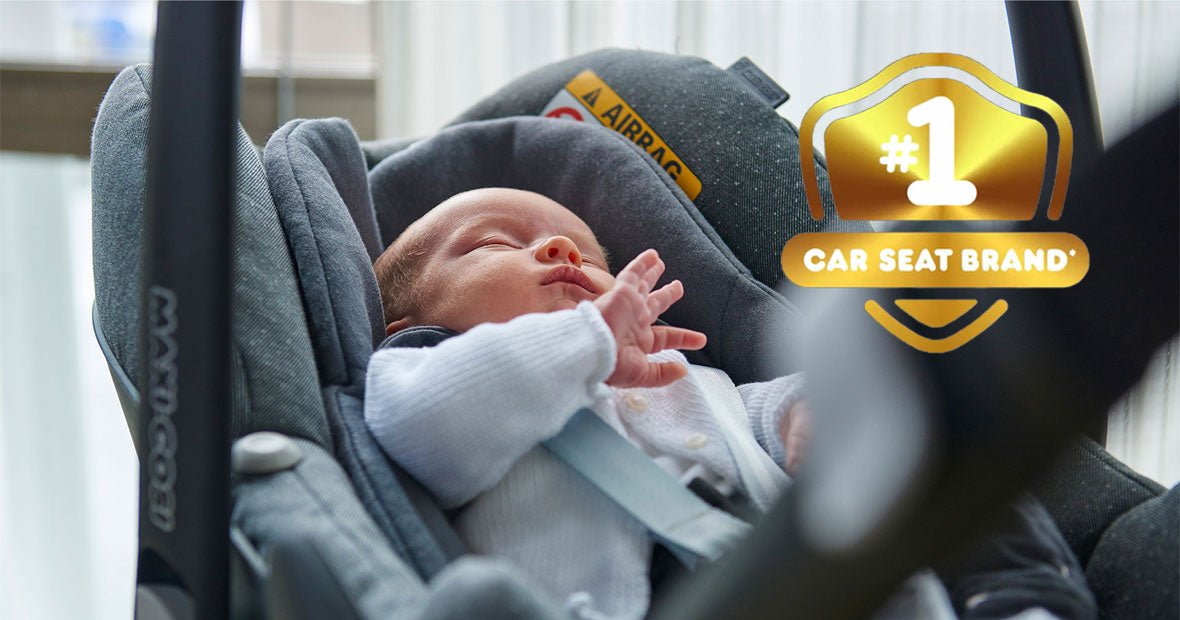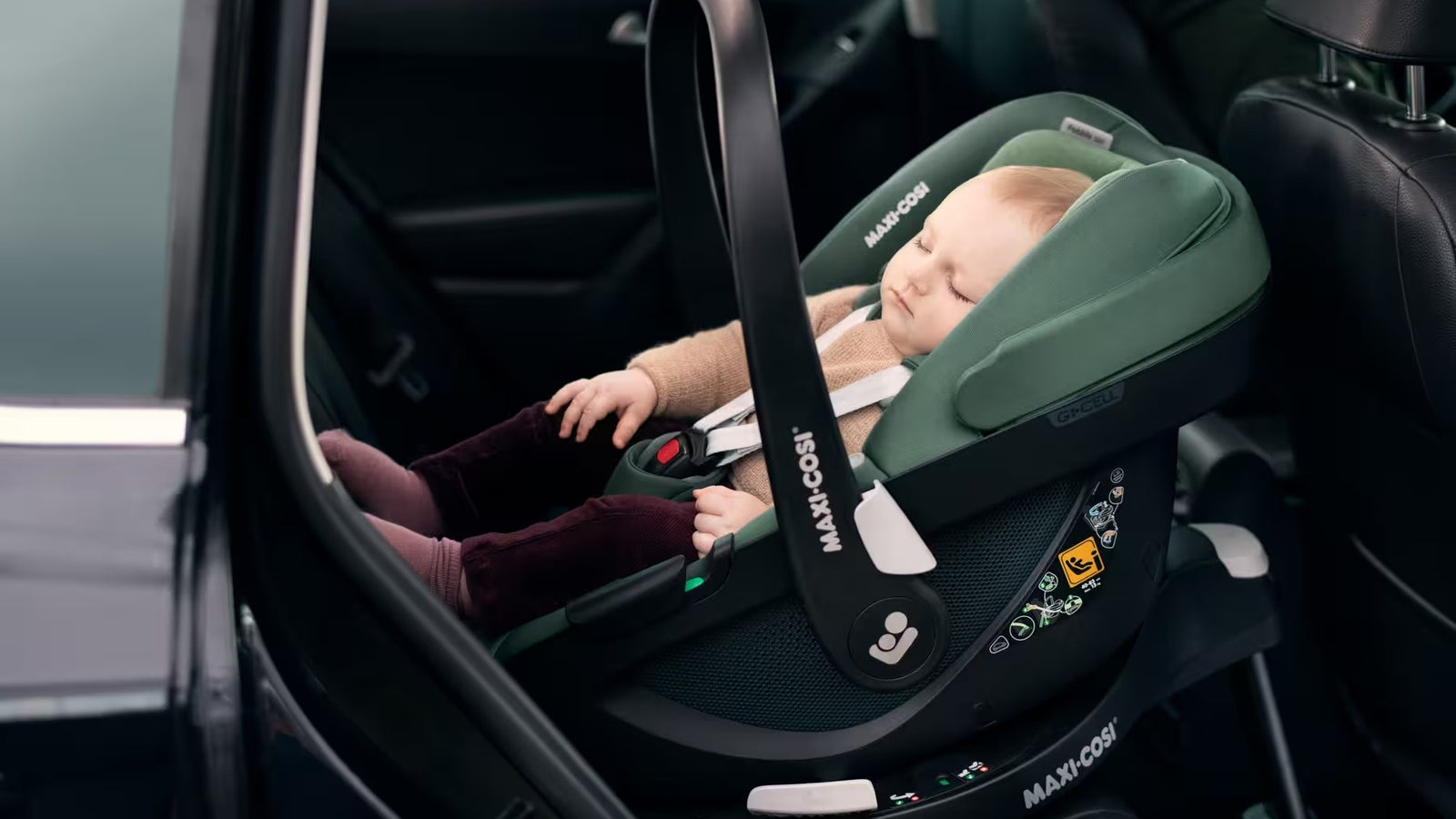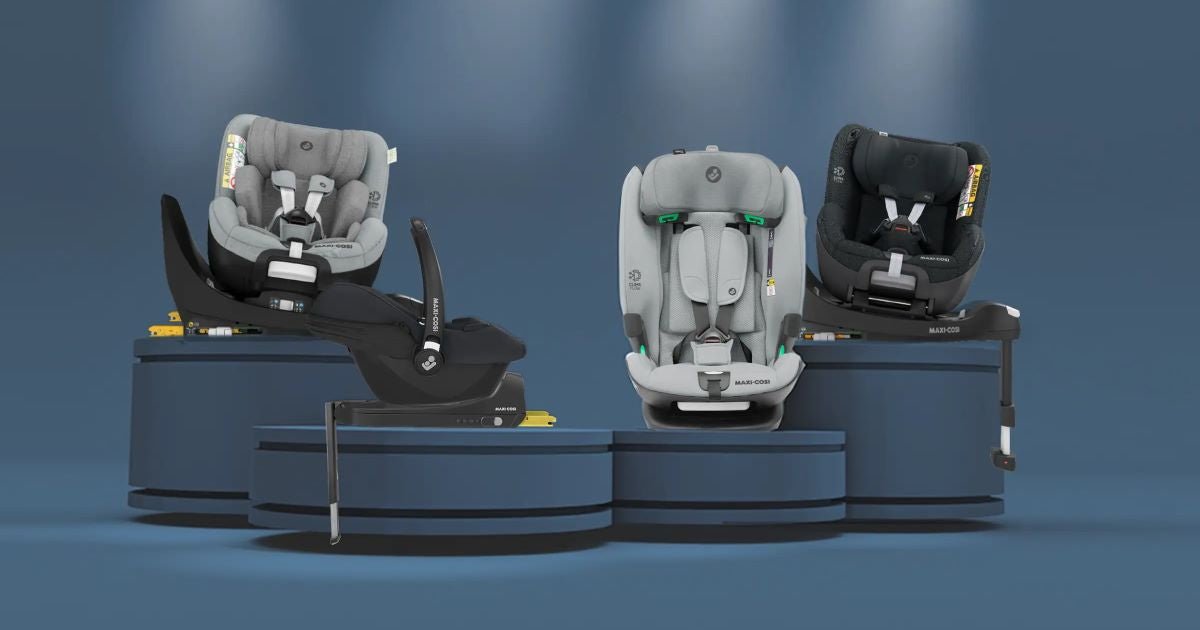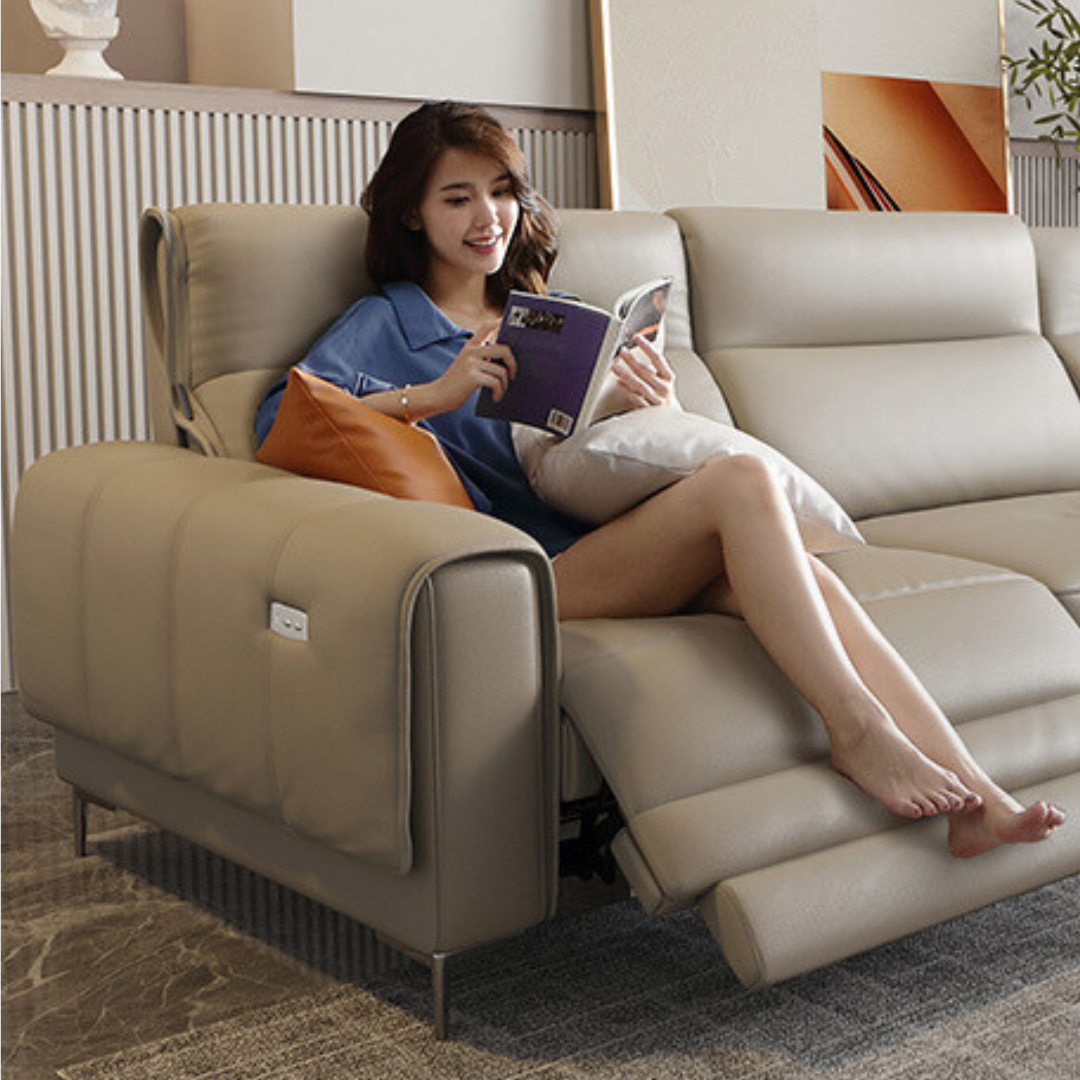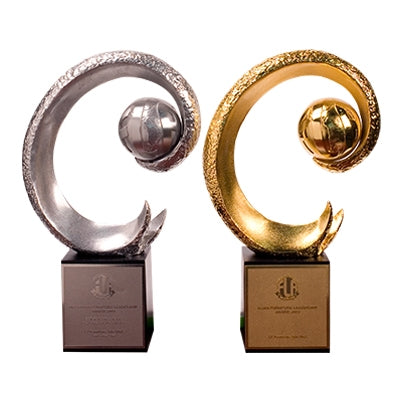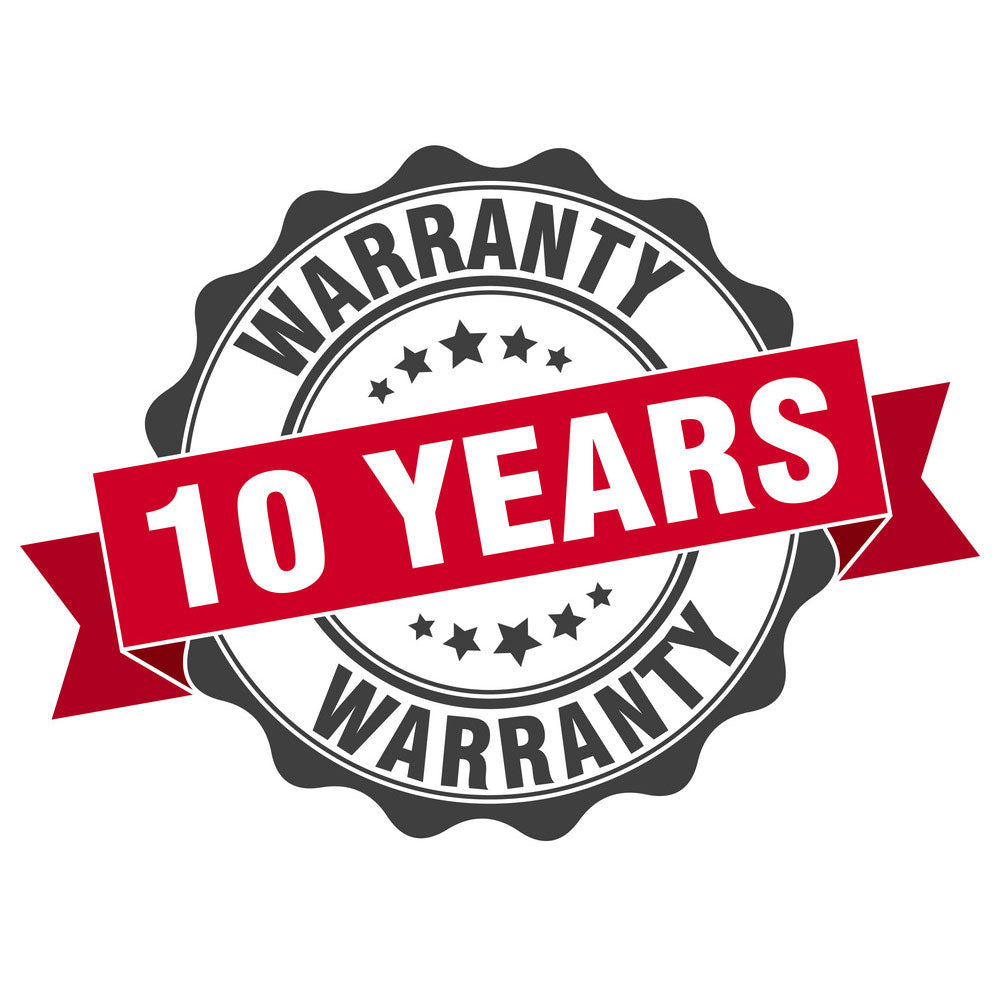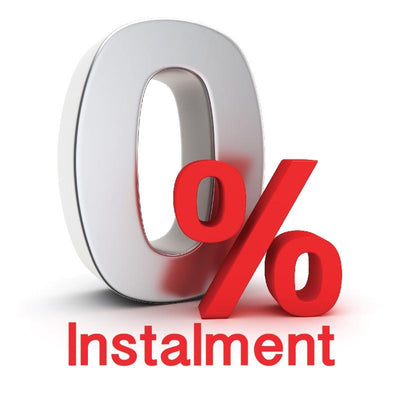When new parents are looking to buy a car seat for their baby, they often have many questions and concerns. They want to ensure that their little one will be safe and secure while on the road. They may not know where to begin in the search for the right car seat. There are so many different options on the market, each with its own unique features and safety ratings. It can be overwhelming to navigate the world of baby car seats.
1. What is the safest type of car seat for my baby?
For infants, the safest type of car seat is a rear-facing infant car seat. It is important to keep your baby in a rear-facing car seat as long as possible. Wait until they reach the maximum weight or height limit for the seat. This is because a rear-facing car seat distributes the force of a crash over the entire back and head. This is much better for the baby's developing neck and spine.
Once your baby has outgrown the rear-facing car seat, they can use a forward-facing car seat with a harness. It is important to keep your child in a car seat with a harness for as long as possible. This is until they reach the maximum weight or height limit for the seat.
After outgrowing the car seat with a harness, your child can use a booster seat. A booster seat raises the child up so that the seat belt fits properly. It is important to use a booster seat. Use one until the child is tall enough to fit properly in a seat belt without one.
It is also important to make sure that the car seat you choose is appropriate for your child's height first. Then followed by weight. Lastly make sure that it is properly installed in your vehicle. You can check the car seat manual and your vehicle owner's manual. There will be specific information on how to properly install the seat.
Europe has developed the iSize standard for car seat manufacturers to improve safety. Ask your car seat consultant about this.
2. How do I properly install a car seat?
Properly installing a car seat is very important to ensure the safety of your child. Here are some general steps for installing a car seat:
Choose the right seat:
Choose a car seat that is appropriate for your child's age, weight, and height, and that fits your vehicle.
Read the manuals:
Read the car seat manual and your vehicle owner's manual carefully. These manuals will provide specific instructions on how to properly install the seat in your vehicle.
Choose the right location:
The best location for a car seat is the back seat, away from active airbags.
Secure the seat:
Use the car's seat belt or LATCH or ISOFIX system to secure the car seat in place. LATCH stands for Lower Anchors and Tethers for Children. Itis an American standard. While ISOFIX is a European standard. In Singapore we tend to follow the European standards of R44 and R129. Most Japanese cars follow the European standards. Find out what standard the car you are parallel importing follows before making a purchase. Local authorised distributors are more reliable in this department. Make sure the seat is tightly installed. It should not move more than an inch side to side or front to back.
Install the seat correctly:
Follow the instructions in the manual to properly install the seat. Pay attention to the direction the seat is facing (rear-facing or forward-facing). As well as the position of the harness straps and the tightness of all straps and connectors.
Check for recalls:
To see if your car seat has been recalled check the National Highway Traffic Safety Administration's website.
Have the installation checked:
If you are unsure if the seat is installed correctly, have it checked by a Maxi Cosi certified Child Passenger Safety Technician. Message ahead for an appointment.
It is important to follow these steps carefully to ensure the safety of your child. If you have any questions or are unsure of anything you can a certified Maxi Cosi Child Passenger Safety Consultant for assistance.
3. How long can my baby use a rear-facing car seat?
It is generally recommended to keep your baby in a rear-facing car seat for as long as possible. At least until they reach the maximum weight or height limit for the seat. This is because a rear-facing car seat distributes the force of a crash over the entire back and head. This is much better for the baby's developing neck and spine.
Most rear-facing car seats have a maximum weight limit of around 16 to 20 kg. But it is important to check the specific weight limit for the seat you are using. Some newer seats have higher weight limits, and can accommodate babies up to 22 kg or more.
It is also important to make sure that your baby's head is at least an inch below the top of the car seat. This ensures a proper fit. If your baby's head is above the top of the seat, they may have outgrown it. Then it is time to move to a forward-facing car seat.
Remember to always follow the specific weight and height limits for the car seat you are using. Read the car seat manual and your vehicle owner's manual for specific instructions on how to properly install the seat.
4. How do I know if a car seat has been recalled?
In the United States, you can check for car seat recalls by visiting the National Highway Traffic Safety Administration's (NHTSA) website at www.safercar.gov. On the website, you can search for recalls by the car seat manufacturer and model number. You can also sign up for email alerts to receive notifications about new recalls.
In Europe, you can check for car seat recalls by visiting the European Union's Rapid Alert System for non-food dangerous products (RAPEX) website at https://ec.europa.eu/consumers/dyna/rapex/index.cfm?event=main.home2.show&lng=EN. On the website, you can search for recalls by product type (including car seats) and country.
It is important to regularly check for recalls. As a recalled car seat may not provide the necessary protection for your child in the event of a crash. If you find that your car seat has been recalled, you should contact the manufacturer. They will provide further instructions on how to get a replacement or repair.
5. Can I use a second-hand car seat?
It is generally not recommended to use a second-hand car seat. There are a few reasons for this:
Safety:
It is impossible to know the history of a second-hand car seat. It may have been involved in a crash, or it may have been improperly used or installed in the past. This can compromise the safety of the seat and put your child at risk in the event of a crash.
Expiration dates:
Most car seats have expiration dates, after which they should no longer be used. The expiration date is typically 6-10 years from the date of manufacture. This can be found on a sticker on the seat or in the manual. If you are using a second-hand seat, you may not know how old the seat is or when it expires.
Missing parts:
When buying a second-hand car seat, you may not receive all the necessary parts or instructions. This can make it difficult or impossible to properly install the seat in your vehicle.
For these reasons, it is generally recommended to buy a new car seat rather than a second-hand one. If you do choose to use a second-hand car seat, make sure to carefully inspect it. Look for any signs of wear and tear. Check the expiration date and make sure you have all the necessary parts and instructions. It is also a good idea to have the seat checked by a certified Child Passenger Safety Consultant.This ensures that it is safe to use.
6. How do I properly buckle my baby into the car seat?
Properly buckling your baby into the car seat is very important. This is to ensure their safety in the event of a crash. Here are some general steps for buckling your baby into a car seat:
Adjust the harness straps:
Make sure the harness straps are at or below your baby's shoulders for rear-facing seats. For forward-facing seats it has to be above their shoulders
Buckle the harness:
Firstly hread the harness through the slots on the car seat. Secondly buckle the harness according to the instructions in the manual. Lastly make sure the buckle is securely fastened and the chest clip is at armpit level.
Tighten the harness:
Pull on the harness straps to tighten them, making sure they are snug against your baby's body. You should not be able to pinch any excess strap material at the shoulder.
Adjust the recline angle:
For rear-facing seats, make sure the car seat is properly reclined. Follow accordingly to the instructions in the manual. The seat should be at a 45-degree angle or less.
Check the fit:
Once your baby is buckled into the car seat, give it a gentle shake. This is to make sure it is secure. If the seat moves more than an inch side to side or front to back, it is not tight enough. If not then you will need to adjust the straps.
It is important to follow these steps carefully to ensure that your baby is properly buckled into the car seat. Make sure to read the car seat manual and your vehicle owner's manual. Look for specific instructions on how to properly install and use the seat. If you have any questions or are unsure about how to use the seat, you can contact the manufacturer or a certified Maxi Cosi Child Passenger Safety Consultant for assistance or training.
7. Can I use a car seat on an airplane?
Yes, you can use a car seat on an airplane for your child. In fact, many parents choose to use a car seat on an airplane for the added safety and security it provides for their child.
To use a car seat on an airplane, you will need to purchase a separate ticket for your child and bring the car seat with you to the airport. The car seat must be approved for use on an airplane, and must meet the Federal Aviation Administration's (FAA) guidelines for car seats.
To meet the FAA's guidelines, the car seat must:
- Have a label stating that it is approved for use on an airplane
- Be manufactured within the last 5 years
- Meet all applicable safety standards
You can check the car seat manual or contact the manufacturer to see if the seat is approved for use on an airplane.
To use the car seat on the plane, you will need to secure it to the airplane seat using the airplane's seat belt. Some airlines may allow you to use the LATCH or ISOFIX system (Lower Anchors and Tethers for Children) to install the car seat, but you should check with the airline in advance to confirm.
It is important to note that not all airlines allow the use of car seats on their planes, and some have specific guidelines or restrictions on the use of car seats. It is a good idea to check with the airline in advance to confirm their policy on car seats and to make sure you have all the necessary information and equipment.
8. How do I transition my baby from a rear-facing car seat to a forward-facing car seat?
When transitioning your baby from a rear-facing car seat to a forward-facing car seat, it is important to follow the specific guidelines for the car seat you are using. Here are some general steps for transitioning your baby to a forward-facing car seat:
Check the weight and height limits:
Make sure your baby has reached the maximum weight or height limit for the rear-facing car seat. You can find this information in the car seat manual or by contacting the manufacturer.
If you purchase a "360" rotating car seat then your transition is easier. Just rotate the seat and remove the insert if appropriate.
Choose a forward-facing car seat:
Choose a forward-facing car seat that is appropriate for your child's age, weight, and height, and that fits your vehicle. Make sure the seat has a harness and is approved for use in your car.
Install the seat:
Follow the instructions in the car seat manual and your vehicle owner's manual to properly install the seat. Make sure the seat is secure and does not move more than an inch side to side or front to back.
Adjust the harness straps:
Make sure the harness straps are at or above your child's shoulders.
Buckle your child in:
Buckle your child into the car seat according to the instructions in the manual. Make sure the chest clip is at armpit level and the harness is snug against your child's body.
It is important to follow these steps carefully to ensure that your child is properly secured in the forward-facing car seat. Make sure to read the car seat manual and your vehicle owner's manual for specific instructions on how to properly install and use the seat. If you have any questions or are unsure about how to use the seat, you can contact the manufacturer or a certified Maxi Cosi Child Passenger Safety Consultant for assistance.
9. Can I put a coat on my baby while they are in the car seat?
It is generally not recommended to put a coat on your baby while they are in the car seat. This is because a coat can compress in a crash, leaving extra space between the harness and your child's body. This can increase the risk of your child being ejected from the car seat in the event of a crash.
Instead of putting a coat on your child while they are in the car seat, it is a better idea to dress them in warm layers and use a blanket to keep them warm. You can also use a car seat cover or bunting bag to cover the car seat and keep your child warm.
If you do need to put a coat on your child while they are in the car seat, it is important to follow these steps:
Remove the coat:
Take your child out of the car seat and remove their coat.
Buckle your child in:
Buckle your child into the car seat according to the instructions in the manual. Make sure the chest clip is at armpit level and the harness is snug against your child's body.
Place the coat on top:
Once your child is buckled into the car seat, you can place the coat on top of them, making sure it does not interfere with the harness straps.
It is important to make sure the coat does not compress or loosen the harness straps, and to regularly check the fit of the harness to ensure your child is properly secured in the car seat. If you have any questions or are unsure about how to use the car seat, you can contact the manufacturer or a certified Maxi Cosi Child Passenger Safety Consultant for assistance.
10. Can I leave my baby in the car seat while it is not in the car?
It is generally not recommended to leave your baby in the car seat while it is not in the car. This is because car seats are designed for use in a moving vehicle, and are not safe or appropriate for use as a stationary sleep or play area.
Leaving your baby in the car seat while it is not in the car can increase the risk of:
Suffocation:
Car seats are not designed to be used as a sleep area, and the baby may not be able to breathe properly if they are left in the seat for an extended period of time.
Strangulation:
The straps of the car seat can become tangled or wrapped around the baby's neck, which can be dangerous.
Falls:
Car seats are not designed to be used as a stationary play area, and there is a risk of the baby falling out of the seat if it is not securely fastened in a vehicle.
It is generally safer to remove your baby from the car seat when it is not in use, and to place them in a safe, flat surface such as a crib or play yard. If you need to leave your baby in the car seat for a short period of time while you run an errand, make sure the seat is properly secured in the car and keep an eye on your baby at all times. If you have any questions or are unsure about the safety of the car seat, you can contact the manufacturer or a certified Maxi Cosi Child Passenger Safety Consultant for assistance.
11. Is the car seat safe and crash tested?
All car seats sold in the United States and Europe are required to meet safety standards to ensure their safety in the event of a crash.
In the United States, car seats must meet Federal Motor Vehicle Safety Standards (FMVSS), which are developed and enforced by the National Highway Traffic Safety Administration (NHTSA). To meet the FMVSS, car seats must undergo crash testing to ensure that they provide the necessary protection for children in the event of a crash.
In Europe, car seats must meet the European Union's safety standards, which are developed and enforced by the European Committee for Standardization (CEN). These standards are designed to ensure the safety of car seats in the event of a crash, and include requirements for labeling, materials, and performance.
It is important to make sure that the car seat you are using is approved for use in your vehicle and meets all applicable safety standards. You can check the car seat manual or contact the manufacturer to confirm that the seat is safe and meets the necessary standards. If you have any questions or concerns about the safety of the car seat, you can contact the manufacturer or a certified Maxi Cosi Child Passenger Safety Consultant for assistance.
12. Is the car seat comfortable for the baby?
The comfort of a car seat will depend on the specific seat you are using and the preferences of your child. Some car seats are designed with added features such as padded inserts or headrests to increase comfort, while others may be more basic.
To ensure the comfort of your child in the car seat, you can:
Choose a car seat with added comfort features:
Look for a car seat with padded inserts or headrests, or a seat that has adjustable straps or recline positions to allow your child to find a comfortable position.
Choose a car seat with ventilation technology such as maxi Cosi's ClimaFlow.
Dress your child in comfortable clothes:
Avoid dressing your child in heavy or restrictive clothing, and consider using layers to allow them to adjust to the temperature.
Take breaks:
If you are taking a long road trip, consider taking breaks every hour or so to allow your child to stretch and move around.
Use a car seat mirror:
A car seat mirror can allow you to see your child while they are in the car seat, and can help keep them entertained during the ride.
It is important to remember that car seats are designed for safety, not necessarily for comfort. If your child is uncomfortable in the car seat, you can try the above suggestions to make them more comfortable, but it is important to prioritize safety and ensure that the car seat is properly used at all times.
13. Is the car seat compatible with my car?
It is important to make sure that the car seat you are using is compatible with your car to ensure the safety of your child. Here are a few things to consider when checking the compatibility of a car seat with your car:
Check the car seat manual:
The car seat manual will include information on the specific vehicles that the seat is compatible with. Make sure to check this information to ensure that the seat is compatible with your car.
Check the car manual:
Your car manual will include information on the types of car seats that are compatible with your car, as well as any specific installation requirements. Make sure to check this information to ensure that the seat you are using is compatible with your car.
Check the weight and height limits:
Make sure that the weight and height limits for the car seat are appropriate for your child and that the seat fits properly in your car.
Check the installation:
Make sure that the car seat is properly installed in your car according to the instructions in the manual. A certified Child Passenger Safety Technician can help you with the installation if you are unsure.
It is important to follow these steps to ensure the compatibility of the car seat with your car. If you have any questions or are unsure about the compatibility of the car seat, you can contact the manufacturer or a certified Maxi Cosi Child Passenger Safety Consultant for assistance or use the Maxi Cosi car advisory tool.
14. Can the car seat be easily removed and transferred to another vehicle?
The ease of removing and transferring a car seat will depend on the specific seat you are using and the type of vehicle it is installed in. Some car seats are designed to be easily removed and transferred to another vehicle, while others may require more time and effort.
Here are a few things to consider when removing and transferring a car seat:
Check the car seat manual:
The car seat manual will include information on how to properly remove and transfer the seat. Make sure to follow these instructions to ensure the safety of your child.
Check the weight and size of the seat:
Some car seats may be heavy or bulky, which can make them difficult to remove and transfer. Consider the weight and size of the seat when deciding how to transfer it.
Check the installation:
Make sure that the car seat is properly installed in the new vehicle according to the instructions in the manual. A certified Child Passenger Safety Technician can help you with the installation if you are unsure.
It is important to follow these steps to ensure the safety of your child when removing and transferring a car seat. If you have any questions or are unsure about how to remove and transfer the seat, you can contact the manufacturer or a certified Maxi Cosi Child Passenger Safety Consultant for assistance or use the Maxi Cosi car advisory tool.
15. Is the car seat easy to clean?
The ease of cleaning a car seat will depend on the specific seat you are using and the materials it is made of. Some car seats are designed with materials that are easier to clean, while others may be more difficult to clean.
Here are a few things to consider when cleaning a car seat:
Check the car seat manual:
The car seat manual will include information on how to properly clean the seat. Make sure to follow these instructions to ensure that the seat is cleaned properly and to avoid damaging it.
Check the materials:
Some car seat materials are easier to clean than others. For example, seats with smooth, wipeable surfaces may be easier to clean than seats with fabric or padded covers.
Use the appropriate cleaning products:
Make sure to use the appropriate cleaning products for the seat. Avoid using harsh chemicals or abrasive cleaners, as these can damage the seat or make it less safe for your child.
Allow the seat to air dry:
After cleaning the seat, allow it to air dry completely before using it again. Avoid using a hair dryer or other heat source to dry the seat, as this can damage the materials.
It is important to follow these steps to ensure that the car seat is properly cleaned and to avoid damaging it. If you have any questions or are unsure about how to clean the seat, you can contact the manufacturer or a certified Maxi Cosi Child Passenger Safety Consultant for assistance.
16. Why do baby's and young toddlers have to travel in rearward facing position?
Babies have a large and relatively heavy head compared to the rest of their body. In addition, their neck muscles are not yet fully developed. If the baby is travelling in a forward-facing position, his or her head will be thrown forward in the event of a head-on collision. This can cause serious neck injury and may even be fatal. By placing the baby in a rearward facing position, the forces exerted during the crash will be distributed across the baby’s entire back. It is then safer to travel rearward facing with babies as long as possible.
Recommended Links
- Our Top Rules - Buying & Installing Baby Car Seats.
- Car Seats For Taxis / Grab / Gojek - Top 10 Features.
- What Does i-Size Mean for Baby Car Seats?
- We answer the 16 most asked questions about baby car seats
- Choosing The Right Baby Car Seat For Singapore.
- Choosing The Right Baby Stroller.
- Follow our facebook page for the latest deals.

